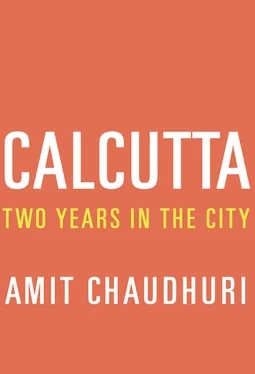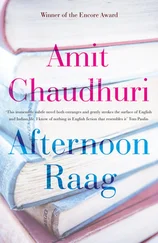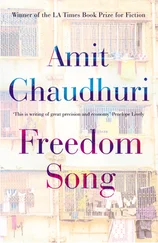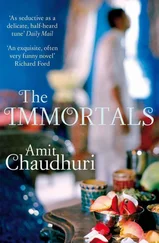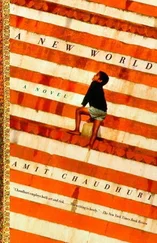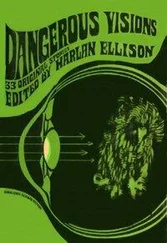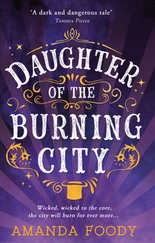This much I deduced from my little gossip about the chef who’d made a run for it from Casa Toscana. It had taken half an hour for me to notice that Cananzi was well informed about, and a fair judge of, his Italian rivals in Calcutta. “Is it true that the man wasn’t Italian at all, but an Italian-American from New York City?” “No, no,” said Cananzi. “He was from Ravenna. He had spent many years in America.” According to Cananzi, the absconder’s name was Rimini. “He was a Michelin-star chef,” nodded Cananzi, as if there were no getting around this intractable fact. “But Calcutta is not a Michelin-star city,” noted Cananzi. I felt chastened. Yes, seen from that perspective, the match was indeed ill-fitting. “Calcutta doesn’t have a conception of fine dining,” he continued. “What I give to diners here is ‘Calcutta fine dining.’ ” I could clearly see the scare quotes around the term. Instead of interrogating him on the meaning of “Calcutta fine dining,” I got to the basics and asked him what “fine dining” was. “Firstly, the time you give to eating. In Italy and France, a ‘fine dining’ experience can take up to three or four hours. But Indians are not willing to spend so much time on food.” He added, opening himself up to a broader sweep of truth-telling and stocktaking: “Delhi has no fine dining. Is an old-fashioned city. Bangalore”—his eyes lit up peremptorily—“is a fine dining city. There, they know how to invest. To make money you have to know how to lose money,” he concluded — a little aphoristically.
There was nothing supercilious about Cananzi; but, despite his readiness to talk, there was a resistance about him — not to me; it was more an inward physical tension, as if his responsiveness and intelligence had been translated into bodily alertness. He was not a busy or fussy person, but I didn’t have the impression that he was ever quite still. He was a low bristly shrub that had been transplanted; he was getting used to his environment, which, every few years, was a variation on the previous one, and for the moment was this coffee shop.
It was three months after the elections, and I was interested in whether he’d reacted to them in any way.
“I’m not a lot into politics,” he said, unsurprisingly: reportedly, aesthetes seldom are. “But good that change has happened,” he confessed, echoing the Trinamool’s much-advertised mantra of paribartan. “Calcutta was growing slowly because previous party didn’t want investment from foreigner companies,” he observed, as others before him have. Now he had a sense that the state would be more swift on the uptake.
“Calcutta has changed a lot,” he told me, pursuing the theme of paribartan but widening it from its Trinamool-specific definition, speaking again in the reflective tone in which he’d described his first ambiguous months at the Hyatt, purveying genuine Italian food. “India is changing. India is the new China. And Calcutta is opening its eyes.” He assured me, “It’s more cosmopolitan. Less ‘racist’ than it was.” He’d chosen the word deliberately, and I was on tenterhooks as to his possible meaning. “Earlier, when foreigner walked down New Market, people would stare as if the person was an alien, and the boys would cheat him. Of course,” he conceded, “it’s a little bit like that in every city in the world.”
Then, quickly reviewing his seven years here, his thoughts converged upon a deeply felt analogy: “Bengalis are amazing people of the heart — like Italians.” There was a time — the early twentieth century, in fact, when Bengalis had just come into their own — when Italians were not quite embraced by the new genteel arbiters of culture in Europe and America, but were seen as untrustworthy and different, if the stories of Henry James or Mann are anything to go by; or, from the point of view of the restless, working-class Lawrence’s letters, were thought to be strangely, comfortingly elemental. “But when it comes to language, Bengalis are like Germans. That’s why I quickly learned the language. Bengalis, like Germans, won’t talk to you unless you speak their language.” East Germans, perhaps; almost all the educated West German people I know make a fetish of speaking perfect English.
There was traction, for him, between his former home and his present one. His brother had visited him; last Christmas, his parents came to Calcutta. “I had heard of Calcutta many years ago because of Mother Teresa, but I had no interest in it. But I always wanted to visit India.” Still adorning his Italian-Bengali comparison, he told me that the two were “eighty per cent the same”: a remarkably high proportion of any national or social character. “Family oriented, cost oriented — they are not into spending too much.” Giving the lie to Elizabeth Bishop’s speculation, “Is it lack of imagination that makes us come/to imagined places, not just stay at home?” he seemed to feel, at certain moments, that the memory and presence of home were never that far away: “There are places in the south of Italy that are even dirtier than Calcutta.”

Europeans who visited Calcutta on the eve and in the wake of the British Empire each handled the experience differently. In Hartly House , the first English-language novel about the city, it’s as if we’ve been placed in a time machine and transported to a hazy future, and not back to the Calcutta of the late eighteenth century when the book is actually set — to a place where there are no Indians, Bengalis, or Hindus, only an odd Morlock-like tribe known as the “Gentoos.” In this city, the English had their weird recreational parties late into the night, until dawn approached, because it was too hot to move during the day. Summer, and the heat, in particular, had to be survived; Thomas Babington Macaulay grumbled with abrasive dignity in a letter to a friend, “We are annually baked for four months, boiled four more, and allowed the remaining four to become cool if we can.” The Bengali historian R. K. Dasgupta tells us with relish that Macaulay confided in his correspondent that the “local fruits were ‘wretched.’ ”
“The best of them is inferior to our apricot or gooseberry … A plantain is very like a rotten pear … A yam is better. It is like an indifferent potato.” He must have been all the more thankful for his expert cook, whom Lord Dalhousie pronounced “decidedly the first artist in Bengal.” … In brief, Macaulay could not find “words to tell you how I pine for England, or how intensely bitter exile has been to me.”
All this had to be overcome and outlasted, not to mention the diseases brought on by humidity. The obscure author of Hartly House , Phebe Gibbes, writes in the opening of her novel that “the Eastern world is, as you pronounce it, the grave of thousands.” William Jones himself died at the end of April, with the onset of another summer, in 1794, of, according to his friend Lord Teignmouth, “a complaint common in Bengal, an inflammation of the liver … He was lying on his bed in a posture of meditation …”
To these deaths and others must be added the millions who perished in the man-made famine of 1943, when local traders were hoarding grain while supplies were being diverted to British Tommies, a reminder that colonialism didn’t necessarily make life in Bengal any easier, or longer.
In comparison — and unrelated to the fact that Calcutta is hardly the historic centre it then was — Cananzi has weathered well. He points out to me the glass-paned, conservatory-like space at the end of the faux balcony we’re sitting on, where you can dine in greater, deeper isolation if you wish. Or, of course, you could remain in these imaginary outdoors. Before I leave, he introduces me to his latest contribution to “Calcutta fine dining”: an elegant, economically stated menu, as well as a charming “interactive” one, something between an iPad and one of those books of fairy tales with 3D illuminations shimmering as in a pool, that one got sometimes as a birthday present; you may not only choose from the menu, but design your own if you wish, by touching the icons, the small bright signifiers of pasta and risotto and antipasti. Immediately, predictably, I feel the lure of the seafood risotto. “You must come and dine here,” he says, this being the most logical and civilized progression from our peculiar acquaintanceship. “And you should surely let me know when you’re coming.” I already see there are advantages to knowing him.
Читать дальше
